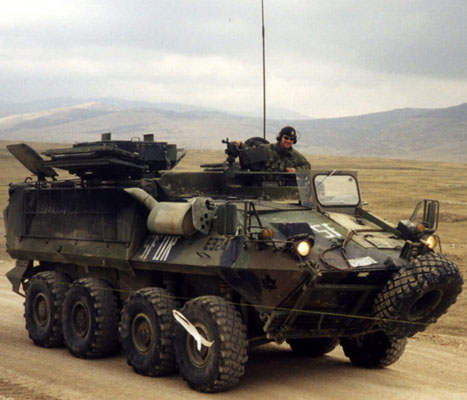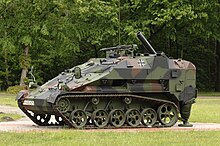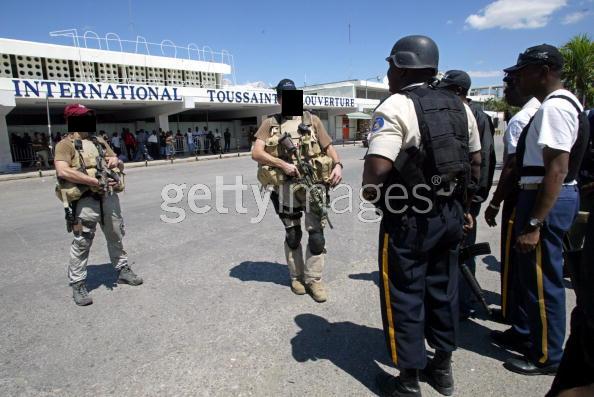Eye In The Sky
Army.ca Legend
- Reaction score
- 3,780
- Points
- 1,160
Spectrum said:Definitely time to upgrade and get rid of our Bison variants, though.
Bison; that was what I thought would have been a decent recce veh out of the things we've had in our inventory the past few decades. I've done (peacetime in Canada) recce in Iltis, track (M113), Bison and the G-Wag. I have zero Coyote time, but I did work a very small bit on my Ptl Cmdr course back in '97 with the surv kit, which I would refer to as 'famil trg'. Needless to say, it was impressive after only working previously with the Mk 1 eyeball, bino's and that old ground radar (name eludes me now).
Bison pro's:
- fast (compared to track vehs)
- with a good driver, dropped tire pressures, etc it was loads better off the hard-stand than a jeep/G Wag ever thought of being. Not as good as a panzer or track, but better than the Cougar/Grizz's, better than the Iltis (though that little effer would go thru more than a lot of people thought if you knew how to drive it), and the G-Wagon is never going to touch the Bison.
- quick transition from off road to hard-stand/hwy driving (if you stopped to actually adjust tire pressures...10 min halt parade and you're off).
- flick a switch, change from 4 to 8 wheel drive. same for marine drive. quick, easy.
- "runflats" mean you weren't fucked immediately like you were if you broke/threw a track.
- was (on paper) a swimmer. I only every did that in the little swim obstacle on the Gtown driving circuit but, in theory, it would do it. It was a small obstacle back then that basically only covered prep/entering/exiting. BUT..I still give it the tick in the box for amphib/swimmer.
- lots of room for extra kit, if you wanted to add a NODLR, the tripod surv kit, room for extra diesel/rats/water/ammo..whatever you might need in the screen for extended periods. I found it a super piece of kit for an OP base.
- easy to Crew Command the veh. With the position of the CC seat behind the driver like the Grizz (but 300% better than the grizz for CC comfort), you could fairly easily jump up and do a crest drill with just the top of your noggin coming over the crest. No turret to consider.
- 2 air sentry hatches were good for Obs, for everything they did mounted. easy enough for them to get in/out the back on their own when needed. good set of eyes when reversing/jockeying/moving in a hide, etc.
- some armour = some protection. Looking at the Iltis and G-Wag on this one.
- internal/external storage. even if you took the section box off the top, still decent.
- could pop smoke to run away behind.
Con's:
- no real firepower, but equal to the G-Wag and slightly worse than the Lynx with the .50
- less capable cross country than track (outweighed by the speed difference, IMO. I got Bisons in lots of the same areas I was in with track...and mostly faired out okay.)
- when it was stuck..it was fuckin good and stuck.
- noise. compared to the Iltis. But a good driver could minimize that, help keep the jake brake from kicking in, etc.
- skill fade on the D & M side (for the PRES side). They just didn't get enough time on the veh to know it, how to use and not use it.
The Iltis, while great for sneakin' around, easy to command in, great for finding the 'barely low ground' and being able to exploit it, etc, wasn't a great veh in any other way other than fuel economy. But in the warm weather months, with all the tarp, doors, etc stripped off it, you could get some decent recce done with it...as long as you weren't required to go far from the hard-stand.
The G-Wagon. Either you have to CC from the top and have an Obs who is looking thru a cab/window...which means you also are going to have to work the C6...or you put the Obs up top and now you have to CC from inside. I didn't like it and the 'cons' of it compared to the Iltis (for a PRES recce veh or whatever) heavily outweighed the "pros".
Overall, from my time in the mud recce world, given the choice I'd of taken a Bison over a Iltis/G-Wag/Grizz/Cougar/M113 any day of the week. I always thought the Bison's only 2 real drawbacks from the Coyote with the mast and 25mm...but those are pretty substantial drawbacks and are somewhat balanced with the swim aspect to me. I've no time in a Coyote other than gawkin' at them a few times.
But, from the ones I'd been in before the jump to manicures and room service, I think we missed it not using the Bison more heavily in the mud recce stuff.





